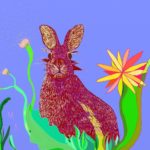
Working with the Visual
Visual media can provoke memories, invite emotions, and imply something in addition to what is explicitly seen. Consider how you feel when confronted by an image of a powerful ocean storm as opposed to a calm field of wheat on a sunny day.
When constructing digital stories, we encourage digital storytellers to think about the emotions they want to emphasize and how those emotions can be communicated visually.
Images and video can be used in ways that are more than just illustrative of an audio narration. Images that appear to be contradictory or in opposition of the audio they are timed with in a digital story can be a powerful way to disrupt the viewer’s expected viewing experience and draw attention to important tensions within a storyteller’s narrative.
The digital storytelling format provides for many different approaches to the visual aspect of constructing a digital story. In our online workshops we discuss three main methods of gathering visual materials:
As mentioned in the Working with Archival Images video tutorial, working with materials from a family collection or personal archive can be a powerful and empowering approach to retelling one’s historic narrative. In My Mi’kmaw Body, the storyteller uses photographs from her family’s history to confront the colonial gaze which views her Indigenous fat body as a failing.






